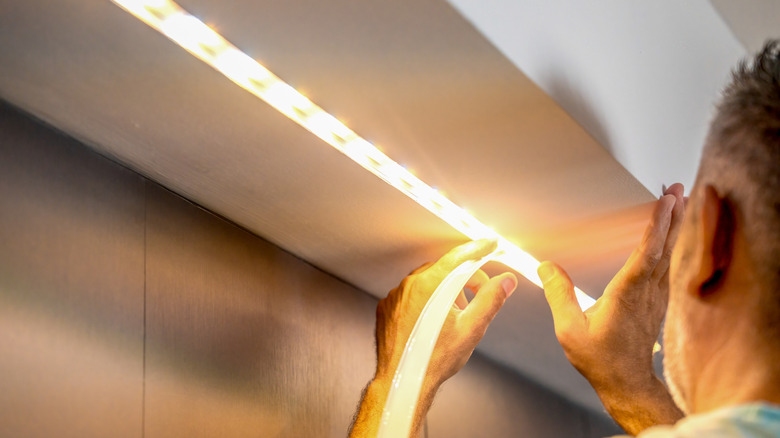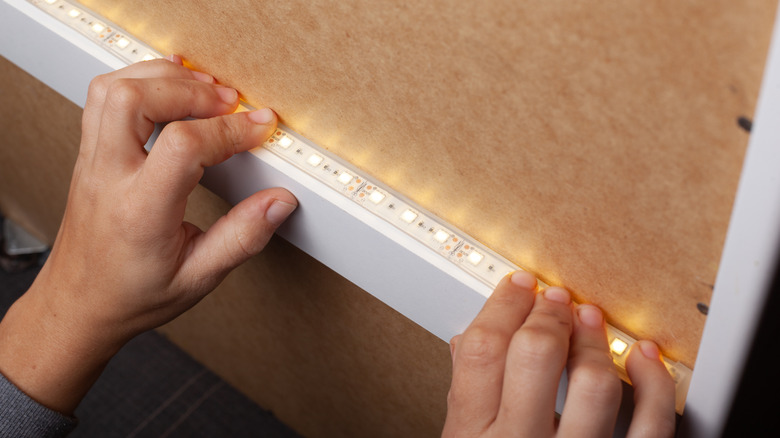Mistakes Everyone Makes When Installing LED Strip Lights
We may receive a commission on purchases made from links.
Unless you've got a fireplace in every room, your best bet to make any room feel cozier is indirect lighting, and LED strip lights are one of the easiest ways to add it. Installing LED strips is relatively easy, but there are a few common mistakes to avoid, including improper mounting, trimming, bending, and connecting.
Unlike some light fixtures, LED strip lights aren't designed to serve any aesthetic purpose aside from providing light — the strips themselves are quite utilitarian looking. But they also come with the benefit of being much more versatile. They can be cut or extended to custom sizes, they come in wireless versions, and many models can change color, color temperature, and brightness levels. They can be installed just about anywhere, including under counters, behind furniture, and other spots that are difficult to illuminate with traditional light bulbs. This "hidden lighting" trick creates a diffused light that's much gentler and cozier than direct lighting. It could even be the key to making your home look more modern.
Wherever you plan to use LED light strips to brighten up your home, proper installation is essential. Not only do improperly installed LED lights look less appealing, but they can also suffer damage that ruins the effect. Before you get started, always measure your space and plan the layout of the strips.
Four common mistakes and what to do instead
The first mistake to avoid is improper mounting, which can lead LED strip lights to droop or even fall off. Most strips come with an adhesive backing. Don't apply this directly to your walls — prep the surface first by cleaning, degreasing, drying, and even sanding if needed. Peel one section at a time, applying pressure for 10 to 15 seconds to secure it. Some surfaces may need extra support such as mounting tape, clips, or screws.
Second, don't make the mistake of trimming your LED strip lights outside of the designated spots. This can damage the strips and leave them non-functional. Instead, look for the marks that show you where to trim, make sure the power is disconnected, and use sharp scissors to make a clean cut. Don't forget to measure the exact length you need before making any cuts.
When it comes to corners, keep in mind that some light strips are able to bend at 90-degree angles, but not all manufacturers recommend it. You can make a loop to turn the corners instead, or use flexible connectors as a more attractive and neat-looking option. If you need to connect multiple strips, don't make the mistake of buying a random light extension kit online. Make sure to consult your manufacturer's directions on the right method, since they vary from brand to brand.
Lastly, a common mistake is choosing the wrong strips — for example, using indoor lights outdoors, or using strips that aren't bright enough for your needs. These mistakes can range from annoying to dangerous, so shop carefully and check the specifications before making your purchase.

